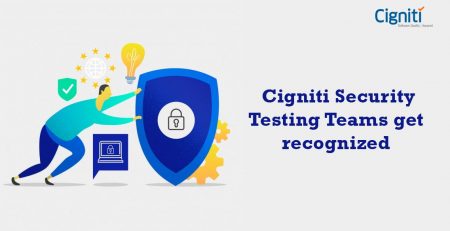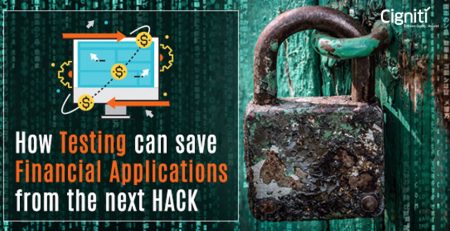VAPT for BFSI: Safeguarding Financial Data & Minimizing Cybersecurity Risks
In a rapidly digitizing world, thanks to COVID, cybersecurity has become a key focus of CxOs. Banking, Financial Services & Insurance (BFSI) organizations, which handle users’ and employees’ sensitive financial and personal information, are constantly threatened by cybercriminals.
According to Cybersecurity Ventures, the cost of cybercrime will hit $8 trillion in 2023 and grow to $10.5 trillion by 2025. Ransomware attacks on financial services have increased from 55% in 2022 to 64% in 2023,
So, banks and financial institutions are big targets for cyber-attacks. How can these organizations prepare themselves against these potential cyber threats?
The answer is to perform periodic and thorough Vulnerability Assessment and Penetration Testing (VAPT).
What is Vulnerability Assessment and Penetration Testing (VAPT)? Why is it needed for BFSI organizations?
VAPT for BFSI comprises various security assessments to help address cybersecurity risks across an organization’s information technology landscape. These tests include automated vulnerability tests, human-led penetration tests, or ethical hacking tests.
BFSI organizations handle highly sensitive financial data of individuals, governments, and public and private corporations. Those data are bank account numbers, credit card numbers, national identification numbers, addresses etc.
Data breaches in such institutions can lead to financial losses, regulatory penalties, and loss of reputation for the organizations. So, most of these organizations have invested heavily in cybersecurity infrastructure to ensure that their systems, applications, and databases are safe from cyber threats.
Even before COVID, digitization was a significant trend in the BFSI industry. Apart from the existing firms going digital, digital-only financial institutions have emerged in the BFSI industry landscape.
This heavy digital presence in this industry has made these organizations even more vulnerable to cyberattacks. The plethora of access mechanisms like the web, mobile and wireless technologies have exponentially increased financial institutions’ points of vulnerability.
In addition to their internal systems, banks also have secondhand exposures resulting from credit/payments card information being handled by organizations in other industries, like retail, hospitality, e-commerce website, etc., or by outsourced IT service vendors who manage their systems remotely.
All these exposures have made VAPT a primary need for the survival of BFSI organizations.
In addition to all the above, VAPT is an organizational imperative to protect against cyber threats and a compliance requirement in today’s world.
The European GDPR, ISO 27001, Gramm Leach Bliley act of the USA, California Consumer Privacy Act (CCPA) and similar data protection acts across the globe have necessitated VAPT testing for information security.
Financial services organizations are at the top of the regulatory focus for data protection as they handle highly sensitive nonpublic personal information (NPI).
What are the different types of threats that financial services organizations face today?
The different threats faced by financial services organizations today are as follows.
1. Unencrypted data
A primary way of safely storing data is through encryption. Even in these times, encryption of sensitive information is not followed religiously across the organization, e.g. the data in test environments is left vulnerable to internal malicious threats.
2. Ransomware & Malware
We have seen multiple ransomware & malware attacks on leading banking institutions and IT service organizations that work with banks. Many of these vulnerabilities involve internal employees who connected using infected machines or provided user credentials unintentionally in phishing attacks. According to Forbes, ransomware causes about $75 billion per year in damage to various organizations.
3. Cloud providers
Cloud providers have become key targets of cyber attacks as many BFSI organizations use cloud providers for storage and applications. A recent Wall Street Journal report on an attack named ‘Cloud Hopper’ involved multiple cloud providers.
4. Unsecure third-party vendors and services
In a world where outsourcing of technology and business process services is the norm, the security practices within the third-party services firms that work on the systems are another source of vulnerability.
Financial institutions also use multiple third-party vendor software packages in their application landscape. Inadequately tested third party software could be another source of vulnerability for financial institutions.
5. Phishing & Spoofing
In this method, many duplicate banking websites hackers create trick customers into providing their user credentials. The hackers then use these credentials to steal from the user accounts.
6. Internet of Things (IoT)
Hardware is the new area of vulnerability that cyber-attacks have started to focus on. Devices such as home routers, printers, and cameras are vulnerable to attack.
While we’ve seen the different modes of threats that financial services organizations face, it is imperative to know more about the services that VAPT testing offers.
What are the services that comprise VAPT testing?
Vulnerability assessment is a systematic review of the weaknesses in the information technology landscape. The assessment includes
- Servers and Hosts
- Network and wireless infrastructure
- Databases
- Applications – Internal and External facing applications
- Cloud infrastructure security
Vulnerability assessment alerts organizations to pre-existing flaws in their applications, hosts, networks, or databases. It does not specify which of those vulnerabilities can be exploited to cause losses. This is where penetration testing comes into play.
Penetration testing (a.k.a. Pen-testing) attempts to exploit those vulnerabilities and helps the organization understand the severity of each of these vulnerabilities.
Pen testing comprises a combination of automated and human-led tests to identify and exploit these vulnerabilities in the infrastructure, external-facing and internal-facing applications, and other systems.
The various types of penetration testing are
1. External and internal infrastructure testing
- Internal threats from employees (Intentional & Unintentional) malicious actions
- Threats to external-facing systems like web servers, mail servers, FTP servers, etc.
2. Web and mobile application testing
- Coverage includes OWASP’s top 10 application security risks.
3. Social vulnerability testing
- Proactive testing using phishing emails and duplicate websites to create employee awareness and susceptibility
In addition to the testing, organizations need to focus on employee and third-party service provider education to prevent them from becoming the conduit for malicious attacks.
Last but not least, IoT devices have added a new hardware angle to the cyber threat area. So, organizations that involve remote or home-based office-based work need to include IoT devices in their VAPT testing.
Thus, Vulnerability Assessment and Penetration Testing combine to provide a detailed view of the flaws in the organization’s systems and the potential losses that these flaws could expose.
How often does an organization perform VAPT?
The industry’s best practice is to run a VAPT once per quarter on all the host systems, applications, databases, and network infrastructure.
In addition to the periodic tests, all web and mobile application development projects need to undergo VAPT to ensure that the new application or enhancement does not introduce vulnerabilities into the landscape.
Conclusion:
Cigniti’s Managed Security Testing Services model is an amalgamation of industry best practices and decade-long expertise in software testing services delivery, ensuring your applications are secure, scalable, and agile. Our Security Testing and web application penetration testing exposes vulnerabilities in applications, assures your application risks are minimized, and benchmarks your software code for increased quality assurance. Our Security Testing services across different industry verticals & enterprises ensure cyber-safety, leading to robust brand image & client retention.
Our 100+ Security Testing experts with over 12+ years of security testing expertise are currently working on more than 25 active engagements and have already completed 75+ successful assignments. Our core offerings as a part of the Security Testing Center of Excellence include Architecture Review/ Threat Modelling and Risk Assessment, Static Application Security Testing, Dynamic/Mobile Application Security Testing, Infrastructure Penetration Testing, Vulnerability Management, IoT Security Testing, DevSecOps, SOC (Security operation center), and training.
The key differentiators of our dynamic application security testing services are:
- Standardized methodologies aligned to OWASP, Open SAMM & OSTTM.
- Testing performed from a Hacker’s Eye View.
- Continuous Testing Platform with in-built Security Engineering & Testing.
- Next Generation IP – BlueSwan™ that comes with a Model-Based Testing Tool (Prudentia) & Reporting Dashboard Verita, for SLA/KPI monitoring; CxO dashboards; Predictive analytics that help in faster decision making, leading to faster time-to-market.
- Industry recognized certifications of our security test experts include Certified Ethical Hacker, Licensed Penetration Tester Master, Certified Information Systems Security Professional, Certified Information Systems Auditor, and Certified Information Security Manager.
Schedule a discussion with our Security and Penetration Testing experts to find out more about why banking and financial services need Vulnerability Assessment and Penetration testing today.





Leave a Reply